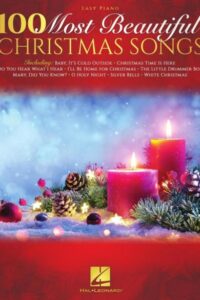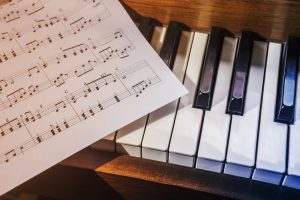Table of Contents
Auld Lang Syne – Rod Stewart
Auld Lang Syne
“Auld Lang Syne” is a Scottish song. In the English-speaking world, it is traditionally sung to bid farewell to the old year at the stroke of midnight on Hogmanay/New Year’s Eve. It is also often heard at funerals, graduations, and as a farewell or ending to other occasions; for instance, many branches of the Scouting movement use it to close jamborees and other functions.

Best Sheet Music download from our Library.
The text is a Scots-language poem written by Robert Burns in 1788, but based on an older Scottish folk song. In 1799, it was set to a traditional pentatonic tune, which has since become standard. “Auld Lang Syne” is listed as numbers 6294 and 13892 in the Roud Folk Song Index.
The poem’s Scots title may be translated into English as “old long since” or, less literally, “long long ago”, “days gone by”, “times long past” or “old times”. Consequently, “For auld lang syne”, as it appears in the first line of the chorus, might be loosely translated as “for the sake of old times”.
The phrase “Auld Lang Syne” is also used in similar poems by Robert Ayton (1570–1638), Allan Ramsay (1686–1757), and James Watson (1711), as well as older folk songs predating Burns.
In modern times, Matthew Fitt uses the phrase “in the days of auld lang syne” as the equivalent of “once upon a time” in his retelling of fairy tales in the Scots language.
The song begins by posing a rhetorical question: Is it right that old times be forgotten? The answer is generally interpreted as a call to remember long-standing friendships.
George Thomson’s Select Songs of Scotland was published in 1799 in which the second verse about greeting and toasting was moved to its present position at the end.
Please, subscribe to our Library.
If you are already a subscriber, please, check our NEW SCORES’ page every month for new sheet music. THANK YOU!
Lyrics (original)
Should auld acquaintance be forgot,
and never brought to mind?
Should auld acquaintance be forgot,
and auld lang syne?[b]
Chorus:
For auld lang syne, my jo,
for auld lang syne,
we’ll tak’ a cup o’ kindness yet,
for auld lang syne.
And surely ye’ll be your pint-stoup!
and surely I’ll be mine!
And we’ll tak’ a cup o’ kindness yet,
for auld lang syne.
Chorus
We twa hae run about the braes,
and pou’d the gowans fine;
But we’ve wander’d mony a weary fit,
sin’ auld lang syne.
Chorus
We twa hae paidl’d in the burn,
frae morning sun till dine;[c]
But seas between us braid hae roar’d
sin’ auld lang syne.
Chorus
And there’s a hand, my trusty fiere!
and gie’s a hand o’ thine!
And we’ll tak’ a right gude-willie waught,
for auld lang syne.
Chorus
The strong and obvious associations of the song and its melody have made it a common staple for film soundtracks from the very early days of “talking” pictures to the present—a large number of films and television series’ episodes having used it for background, generally but by no means exclusively to evoke the New Year.
The first recording of the song was made on wax cylinder in 1898 by the Englishmen Charles Samuel Myers and Alfred Cort Hadden, who sang it in a demonstration of the new technology whilst on an expedition to record Aboriginal Australian music with figures including Charles Seligman, W. H. R Rivers and Sidney Herbert Ray. The original 1898 recording can be heard online via the British Library Sound Archive website.
As a standard in music, “Auld Lang Syne” has since been recorded many times, in every conceivable style, by many artists, both well-known and obscure. The first commercial recording was probably that of Frank C Stanley, who recorded the song in 1910 (which can be heard above). In late 1999, an instrumental rendition by American saxophonist Kenny G reached No. 7 on the Billboard Hot 100 upon release as a single. At the time of charting it was the oldest-written song to make the Hot 100 charts.
Kenny G’s recording incorporates an audio collage of sound bites taken from throughout 20th century history.
Most common usage of the song involves only the first verse and the chorus. The last lines of both of these are often sung with the extra words “For the sake of” or “And days of”, rather than Burns’s simpler lines. This makes these lines strictly syllabic, with just one note per syllable.
Browse in the Library:
Or browse in the categories menus & download the Library Catalog PDF:
